Affiliate disclosure: This post may contain affiliate links. Please see our Privacy Policy.
Herbal vinegar can be made with just about any edible herb or plant for a truly unique homemade herbal infused vinegar.
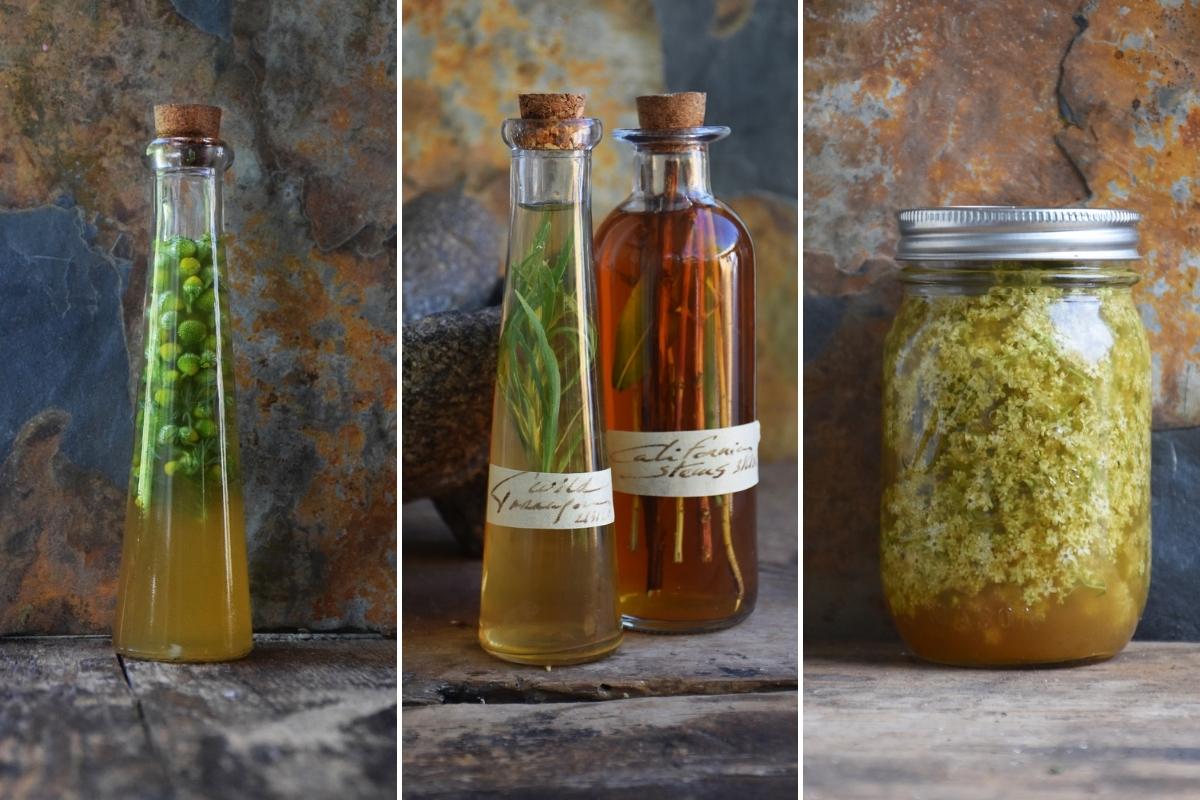
Herbal vinegars are a delicious way to add both concentrated flavor and bright acidity to your cooking, and they’re also a potential source of medicine. Food is medicine, after all, and most common culinary herbs have medicinal benefits as well.
Rosemary is good for nausea, and thyme opens the sinuses. Garlic boosts immunity, and ginger improves circulation. Cinnamon helps your body process sugar, and turmeric is a natural anti-inflammatory.
The list goes on and on, without even leaving your spice cabinet.
When you add in the potential benefits of actually choosing medicinal plants, medicinal flowers and wild edible weeds that don’t often find their way into the kitchen, there’s a lot of options for delicious and healing homemade infused vinegars.
I’ve already written quite a bit about how to prepare different herbal preparations, from herbal salves to infused oils, infused honey, tinctures, oxymels and glycerites.
Today I have a bit of expert help in walking you through the process of making herbal vinegars from any edible plant, be it wild or cultivated.
This particular recipe is for a simple herbal infused vinegar, and it comes from Pascal Baudar’s new book, Wildcrafted Vinegars. He takes you through the process of making herbal vinegars at home, using both hot and cold infusion methods.
This method can be used to make a delicious homemade herbal vinegar with any edible plant, whether it be wild or cultivated, for use as food or medicine (or both).
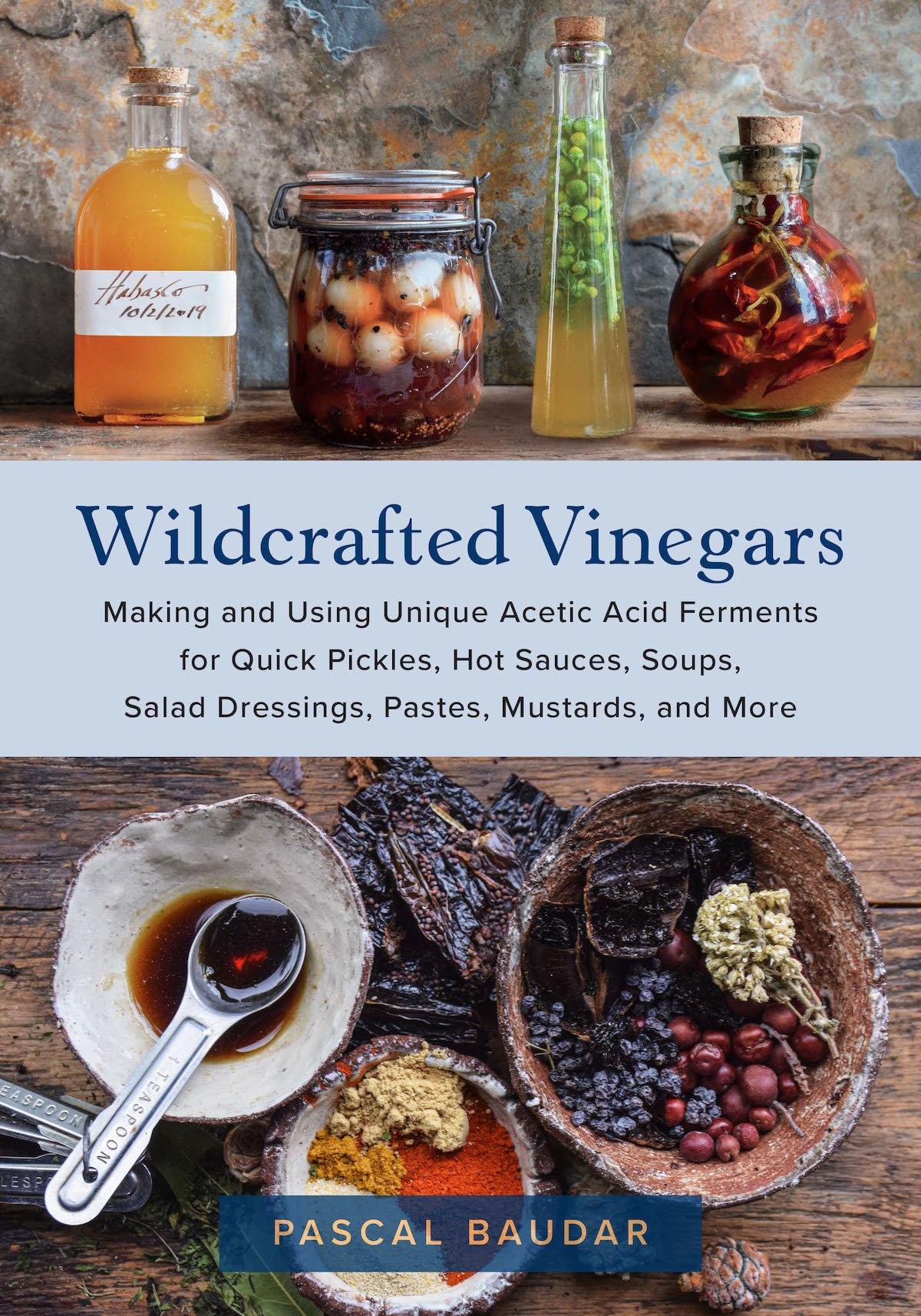
The following excerpt is from Pascal Baudar’s book Wildcrafted Vinegars: Making and Using Acetic Acid Ferments for Quick Pickles, Hot Sauces, Soups, Salad Dressings, Pastes, Mustards, and More (Chelsea Green Publishing, Oct 2022) and is reprinted with permission from the publisher. It has been edited slightly for format and length to fit the web.
Making Herbal Vinegars
You’ll find tons of recipes for herbal vinegars online and in books, but when it comes to wild herbs, you’ll probably need to experiment quite a bit.
Where I lived in Southern California, some of the local savory and aromatic wild herbs were so strong that making these types of vinegars was truly an exercise in moderation.
So don’t get discouraged if your first attempts using local wild ingredients do not turn out very well. I learned a lot from my mistakes. With experience you can truly make some incredible gourmet vinegars.
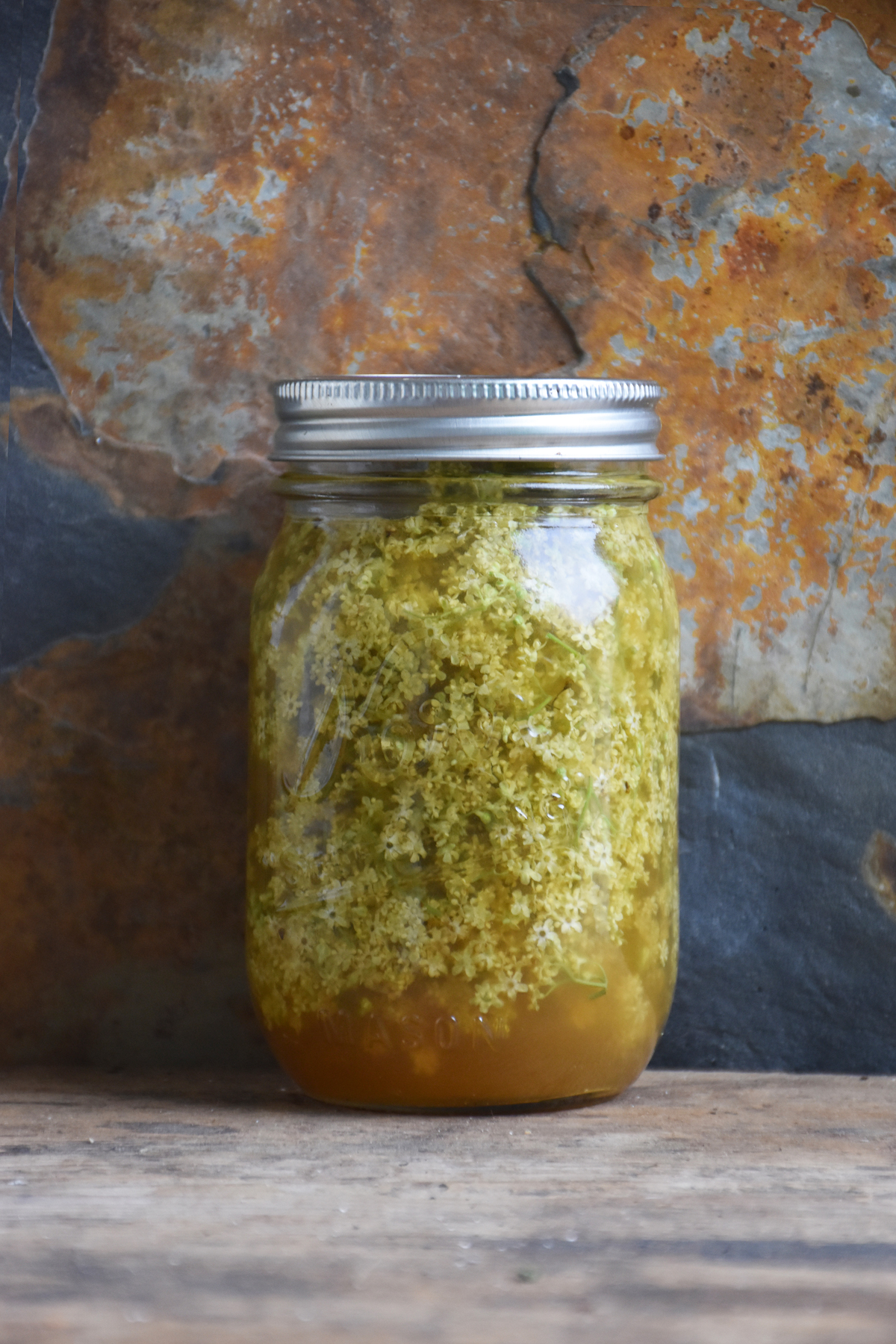
You can start by experimenting with commercial herbs. The most common ones used to infuse vinegars are dill, basil, rosemary, tarragon, fennel, thyme, lemongrass, parsley, bay leaves, lemon zest, garlic, lavender, chives, and mustard seeds.
Some of the local wild aromatic plants I’ve used to infuse vinegars include California sagebrush, mugwort, wild tarragon, yarrow, California bay, sweet white clover, black mustard seeds, pine and fir needles, oak bark, mesquite, juniper berries, various sages, wild fennel, water mint, wild rose hips, manzanita berries, elderflowers, pineapple weed (Matricaria discoidea), and more.
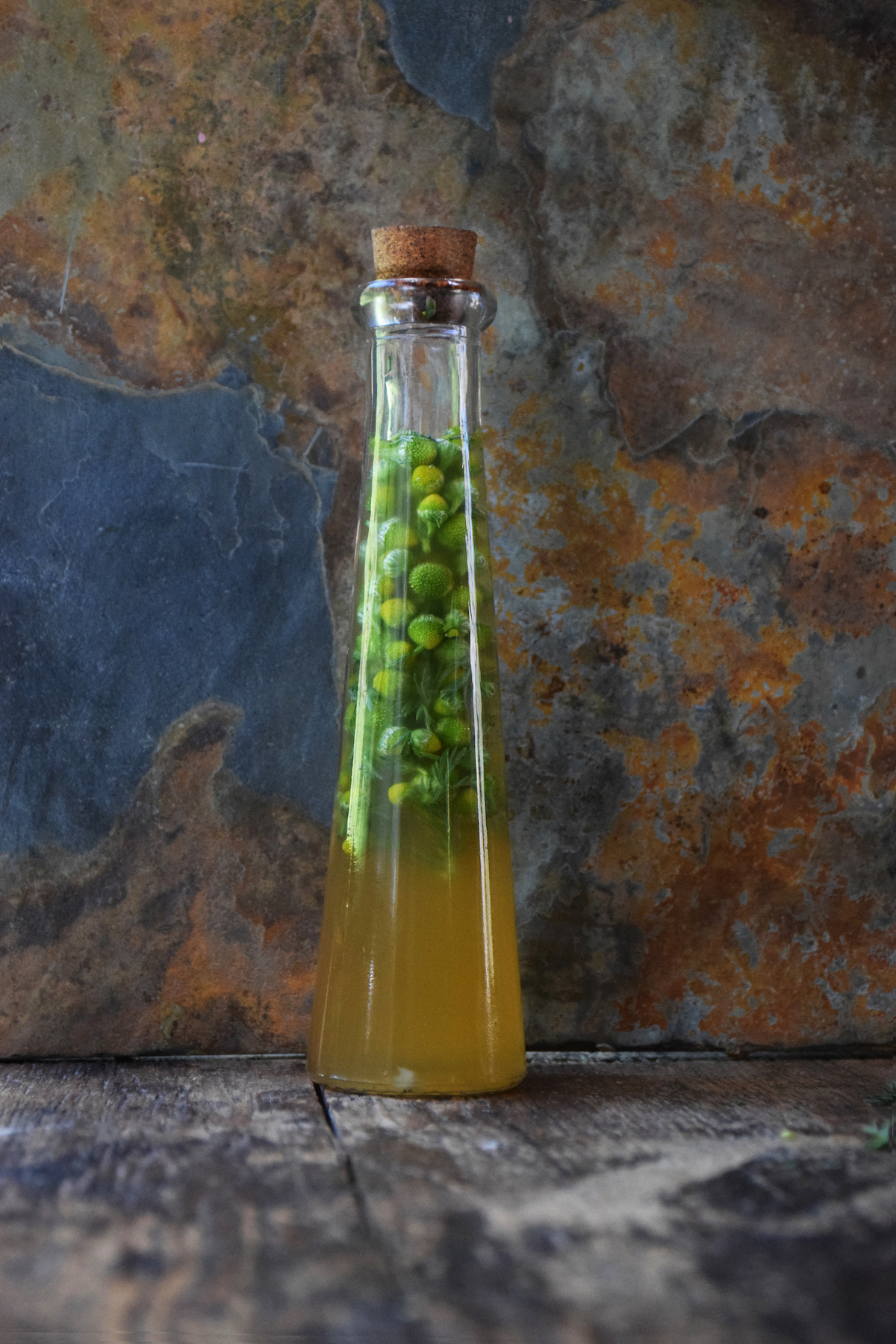
Aside from herbs, I also like to infuse with aromatic stems. When I dehydrate my herbs for various purposes, I usually keep the stems. The stems can be used to flavor soups, make sodas, infuse flavors into ferments, and more. You can even make interesting blends by using the stems from various plants.
Although you will find variations in traditional infused-vinegar recipes, the basic guidelines from various government agencies on ratios of ingredients to 2 cups (480 ml) vinegar are as follows:
3 to 4 sprigs or 1⁄2 cup (25 g) bruised fresh herbs or 1 to 3 tablespoons (9–18 g) dried herbs
While this is a good starting point, the reality is sometimes quite different. For example, 1 tablespoon (9 g ) of dried California sagebrush in 2 cups (480 ml) of vinegar will result in a disgustingly bitter and unusable vinegar. One small, fresh sprig is more than enough. Sagebrush is usually used in tiny amounts in combination with other herbs or spices.
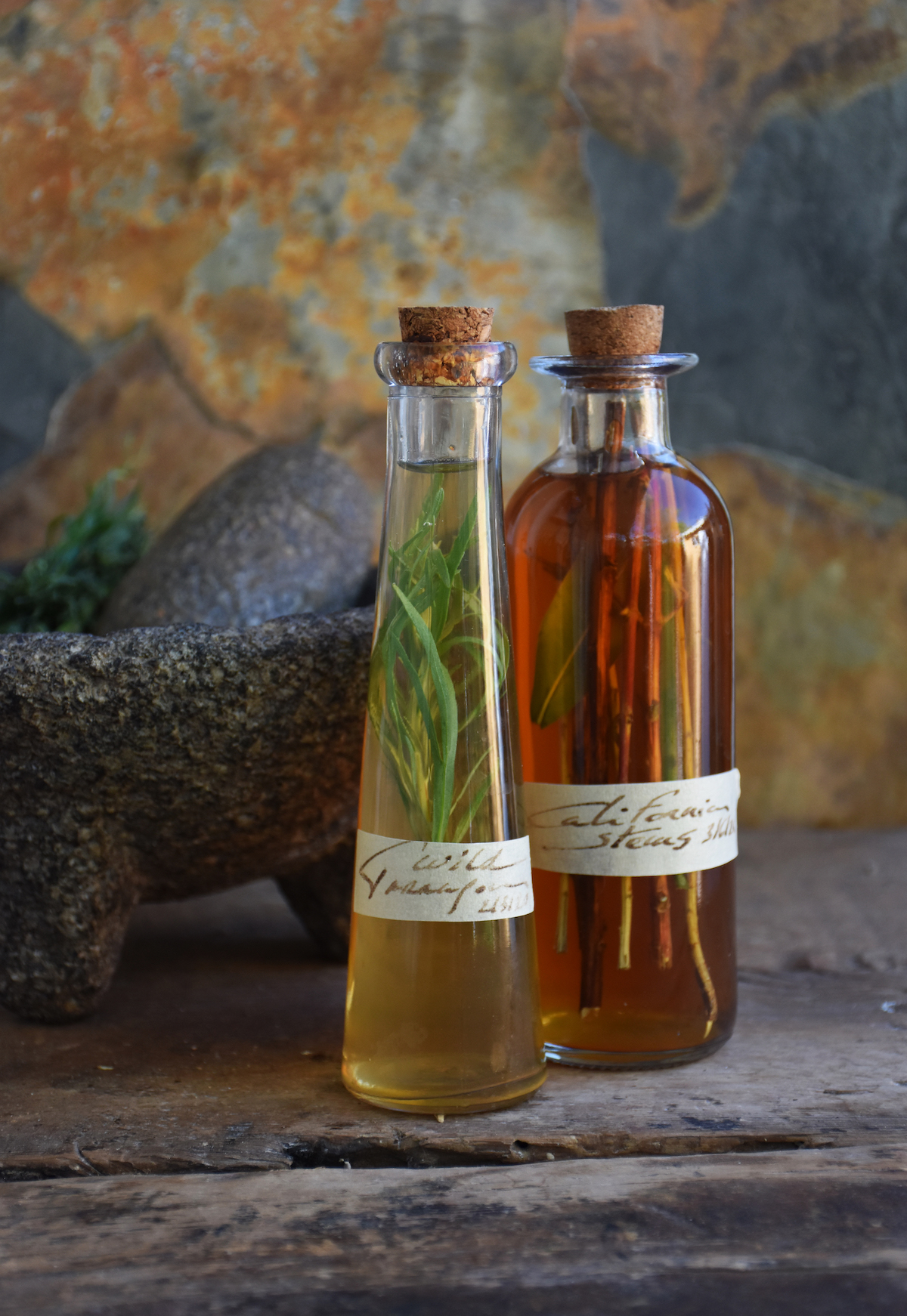
You can blend ingredients, too.
For example, here are the ingredients for a recipe from the Colorado State University Extension:
Herbal Vinegar
- 4 cups red wine vinegar
- 8 sprigs fresh parsley
- 2 teaspoons thyme leaves
- 1 teaspoon rosemary leaves
- 1 teaspoon sage leaves*
It’s also very common to pair herbs with spices. Good pairings, for example, are tarragon with garlic, or dill with dried red peppers. One of my favorites is vinegar infused with wild tarragon and black mustard seeds. You can also season the infused vinegar with sugar or salt.
Distilled white vinegar is often used for infusing herbs and stems, as it is quite neutral in flavor, but I prefer to use apple cider vinegar or my own homemade vinegars. It is recommended to use vinegar with a minimum of 5 percent acidity.
Of course, the ability to make your own vinegar will open a new universe of flavors. A big part of the fun is the creative pairing of vinegar and the ingredients used to flavor the vinegar. My homemade perry (fermented pears) vinegar infused with white fir needles is truly a divine pairing.
Methods of Herbal Vinegar Infusion
For herbs and stems, I decide which infusion method (hot or cold) to use strictly based on flavors. You will have more success extracting flavor from some herbs—such as thyme and mugwort—using the Hot Method Procedure; while other herbs—such as pineapple weed, basil, and mint—will fare much better with the Cold Method Procedure that follows. I don’t use the Hot Method Procedure for pine, fir, spruce needles, or juniper berries, as doing so alters the flavors too much.
Hot Method Herbal Vinegar Procedure
Pour the amount of vinegar you want to use into a nonreactive pot, and start by heating it to just below boiling.
While the vinegar is heating, clean and lightly bruise the herbs you want to use. This will help release their essence. You can do this using your fingers or by placing the herbs on a clean cutting board and pressing them with the back of a spoon. You can also use a mortar and pestle, but remember that the idea is to bruise slightly.
Place the herbs and any additional spices in a glass jar or similar container, then pour the heated vinegar over the ingredients. Leave 1⁄4 inch (0.6 cm) headspace and seal tightly.
Store in a cool, dark place for around 10 days, then taste. If you like the flavors, strain and bottle the vinegar. Otherwise, you can age it longer, usually up to 3 to 4 weeks. If you think the flavors are too strong, you can dilute the infused vinegar by adding more heated vinegar.
Once bottled, cap tightly and store in the refrigerator or a cool, dark place (below 65°F/18°C). Shelf life for optimum flavors is around 6 months, or up to a year in perfect storage conditions.
Cold Method Herbal Vinegar Procedure
Clean and lightly bruise the herbs you want to use as with hot method then place them in a glass jar or bottle. For pine or fir needles, you will need to cut the needle tips to facilitate flavor extraction. Coarsely chopping will also work for herbs such as mint or basil.
Cover the ingredients with room-temperature vinegar. Leave 1⁄4 inch (0.6 cm) headspace and seal tightly.
Store in a cool, dark place for around 10 days, then taste. If you like the flavor, strain and bottle the vinegar. Otherwise, you can age it longer, usually up to 3 to 4 weeks. If you think the flavors are too strong, you can dilute the infused vinegar by adding more room-temperature vinegar. Based on personal experience, pine and fir needles benefit from a much longer infusing period—weeks or sometimes months.
Once bottled, cap tightly and store in the refrigerator or a cool, dark place (below 65°F/18°C). Shelf life for optimum flavors is around 6 months, or up to a year in perfect storage conditions.
Herbal Vinegar Recipes
The recipe below gives you the basic process for making a herbal vinegar with any edible plant, wild or cultivated. If you’re looking for specific variations, try these herbal vinegar recipes:
- Elderflower Infused Vinegar
- Pineapple Weed Infused Vinegar (Wild Chamomile)
- Rosemary Lavender Infused Vinegar
- Chive Blossom Infused Vinegar

About the Author
Pascal Baudar is the author of three previous books: Wildcrafted Fermentation (2020), The Wildcrafting Brewer (2018), and The New Wildcrafted Cuisine (2016). A self-described “culinary alchemist” he leads classes in traditional food preservation techniques.
Through his business, Urban Outdoor Skills, he has introduced thousands of home cooks, celebrity chefs, and foodies to the flavors offered by their wild landscapes. In 2014, Baudar was named one of the most influential local tastemakers by Los Angeles Magazine.
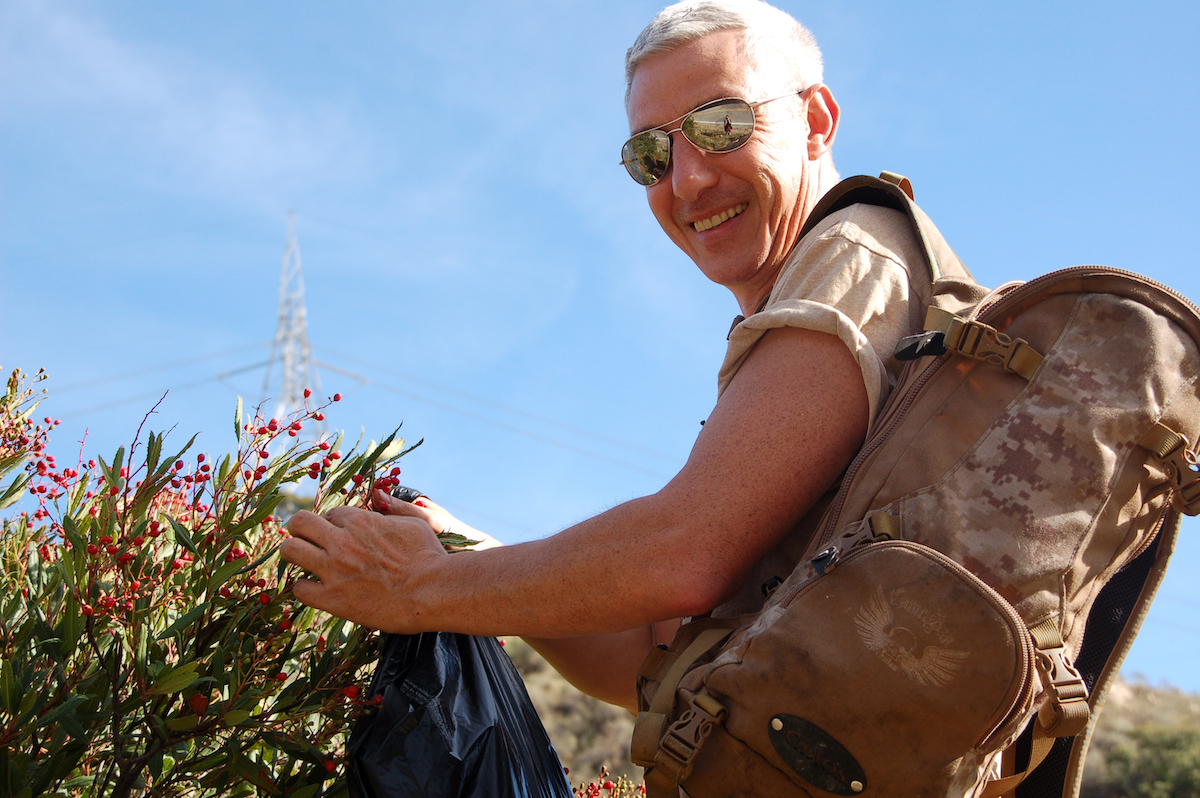
Ways to Preserve Herbs
Looking for more ways to preserve herbs?
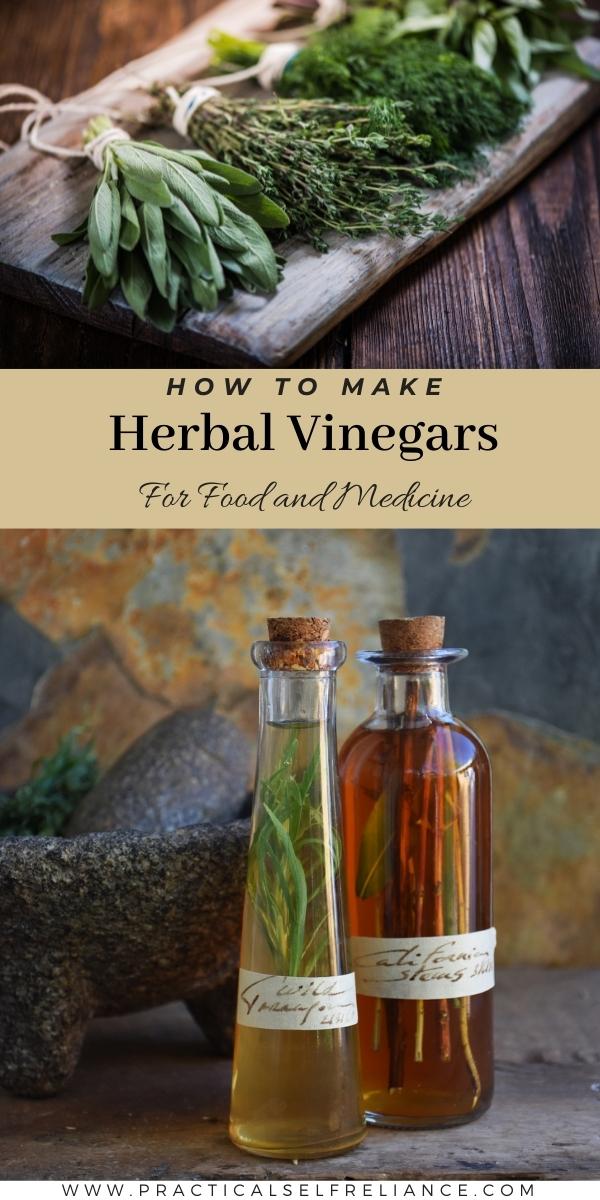
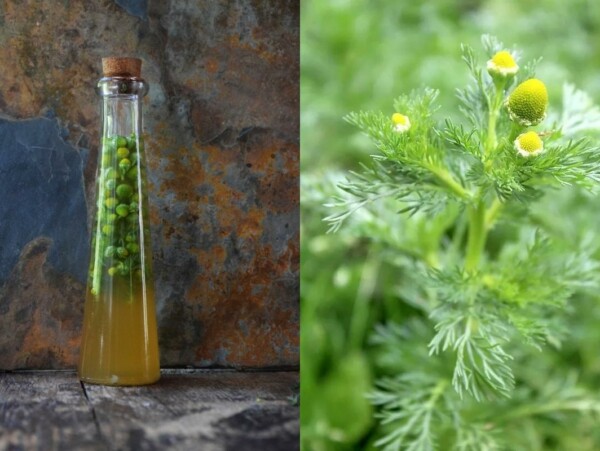

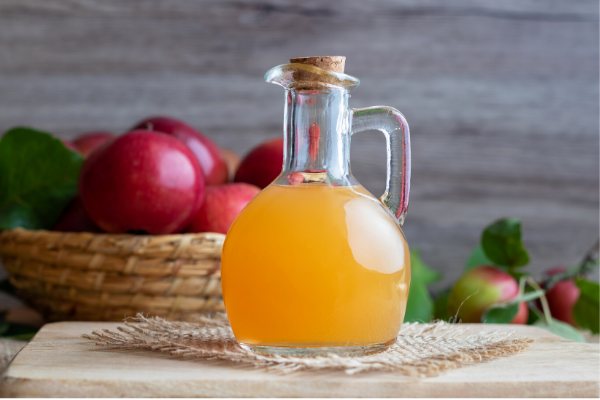
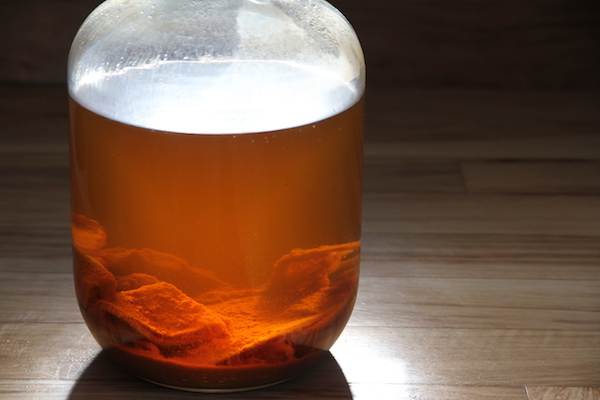
Awesome post
Thank you. So glad you liked it.